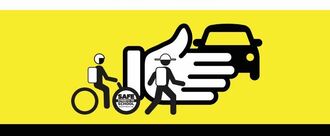-
Renewables Not Gas for Geelong"Natural" Gas is a dangerous and polluting fuel that contributes to the climate crisis. LNG or "Natural" Gas is largely methane, which as we know, can be even worse for the climate than coal because it leaks into the atmosphere. This leaked gas traps more warmth, increasing our risks of severe heat, drought, bushfires and sea-level rise. And it isn’t just a disaster for our climate. It’s also bad for our health. Public health experts are concerned about the health risks of cooking with gas in our homes, which can have a similar impact on childhood asthma as living with cigarette smoke. The City of Greater Geelong has stated in its Climate Change Response Plan that it will be discouraging new gas connections to households from this year onwards, but new planning legislation is required to make this possible. This is an obvious move, it's safer for the climate, safer for our community's health and an all-electric house is cheaper and easier to run. The good news is that some local councils around the country are bowing to community pressure and taking matters into their own hands - promising to end new gas connections, and help people with the cost of switching to electricity and renewables. And with enough pressure from the community, our local council could join this movement today! Geelong is also the location for a new proposed gas import terminal by Viva Energy. This new terminal will import gas from the Scarborough offshore gas field, which will produce some of the dirtiest gas in the world in terms of its emissions and be equal to over a quarter of Australia’s entire national emissions! So let's convince our local Councils to get off gas, so that we don't need dangerous and polluting projects like this in our city.153 of 200 SignaturesCreated by Darcy Dunn
-
Renewables not Gas for East GippslandGas is a dangerous, polluting fossil fuel. It releases greenhouse gasses that contribute to the horrific bushfires and raging floods we’ve seen devastate communities across the country in recent years. And it isn’t just a disaster for our climate. It’s also bad for our health. Public health experts are concerned about the health risks of cooking with gas in our homes, which can have a similar impact on childhood asthma as living with cigarette smoke. And here in Victoria, we burn more gas per person than any other state. But the good news is that some local councils around the country are bowing to community pressure and taking matters into their own hands - promising to end new gas connections, and help people with the cost of switching to electricity and renewables. And with enough pressure from the community, our local council could join this movement today!3 of 100 SignaturesCreated by Shane Elmore
-
Stop the further destruction of the off leash dog park in Lawson Blue Mountains NSWThe park is not only enjoyed by dogs and their owners but families and children, on bikes, walking who enjoy a natural ramble through the trees... not concrete paths. The local Blue Mountains community are not happy with what has been destroyed... including a turtles nest and other habitat.60 of 100 SignaturesCreated by Jude Warren
-
Save Peter Hopper Lake and our wildlifeOur wildlife are dying because the Lake is diseased, and the water is toxic. The lake has been fenced off for 20 months, Council have done nothing. 22 baby signets have died over this time, dead birds surround the lake, resident turtles are coming onto land, dead carp are floating in the water. Another signet died last week, and my daughter has just received a call about another one dying. It's sad, and it's wrong. We need to let the Council know we need to get this fixed. please sign our petition and share with your friends - the more the better.9 of 100 SignaturesCreated by Margaret Gascoyne
-
Bus: Lindfield Learning Village; Chatswood WestUntil March 2021 kids in Chatswood West were in area for Chatswood Highschool - 20 min walk away. Now our local school is the Lindfield Learning Village. Two bus rides and a walk taking at least an hour, if you don’t miss your connection. Transport for NSW have suggested a walking path through the bush. This is not safe or practical with laptops and musical instruments. We’re excited to go to LLV, but we’d like to get there in under half an hour with a direct bus route. Given the school boundary changes were outside of our control and only announced at the last minute, we request a bus route for our kids that makes the school run quick, direct and safe.123 of 200 SignaturesCreated by Jen Coleman
-
Chevron Island's Local Community PantryWe need to be able to help and support our local community without them having to ask and beg for basic necessities such as food and toiletries. A little goes a long way.78 of 100 SignaturesCreated by Anna P
-
Safe Streets to School in CanberraChildren in the ACT deserve to safely walk or ride to school (or to public transport to get to school). Walking or riding to school improves children's fitness and independence. However, they are often driven over short distances to school because parents perceive that their child's journey to school is unsafe for part or the whole of the journey. As a result, our streets are subject to tens of thousands more car trips every year, making them even less safe and clogging up roads with unnecessary traffic during morning drop-off and afternoon pick-up. Streets without footpaths and crossings with speed limits higher than 30km/h are not considered safe under the Safe System approach used in Australia and the ACT. The Safe System approach is the basis for and at the heart of all ACT Government transport policy making and efforts to improve road safety and achieve Vision Zero for deaths and serious injuries on our roads. Why we need Safe Streets to School: - Research shows that children cannot judge gaps in traffic consistently when cars go faster than 30km/h to safely cross a street - On streets where there are no footpaths and crossings, reducing the car speed to 30km/h would prevent most accidents: the stopping distance for a car traveling 30km/h is 13m. Stopping distance for a car traveling 50km/h is 37m. The risk of death or serious injury if hit at 30km/h is less than 10%; compared to 90% if hit at 50km/h. It is an unreasonable risk to place our children in harms way on their journey to school. Safe Streets to School will help: - achieve each of the four goals of the ACT Road Safety Strategy 2020-2025 - make Canberra a healthy, active and inclusive city, including being Australia’s most walkable city - the ACT reach its legislated target of zero net greenhouse gas emissions by 2045, because it will help people if they feel safe enough to choose active travel and so reduce greenhouse gas emissions from transport. Our children deserve the right to walk to school (or public transport to get to school), so they can have a healthy and safe future. We do not believe it is fair to wait for an accident to happen and our children to get injured or killed before they can walk or ride safely. Please make our streets to school safe now.53 of 100 SignaturesCreated by Gillian King
-
Residents for Safe Streets to School: ShoalhavenThe kids of Shoalhaven deserve to walk or ride to school safely just like we did growing up in Australia. Walking to school improves kids' fitness and independence. However, they are often driven over short distances to school by parents. Parents perceive that their child's journey to school is unsafe on part of or on their whole journey. As a result, our streets are subject to tens of thousands more car trips every year, making them even less safe and clogging up roads with unnecessary traffic during morning drop off and afternoon pick up. Streets without footpaths and crossings with speed limits higher than 30km/h are not considered safe by Australia's safe system approach. The Case for crossings: Research shows that children cannot judge gaps in traffic consistently when cars go faster than 30km/h to safely cross a street On streets where there are no footpaths and crossings, reducing the car speed to 30km/h would prevent most accidents: the stopping distance for a car traveling 30km/h is 13m. Stopping distance for a car traveling 50km/h is 37m. The risk of death or serious injury if hit at 30km/h is less than 10%; compared to 90% if hit at 50km/h. It is an unreasonable risk to place our children in harms way on their journey to school.22 of 100 SignaturesCreated by Matthew Loft
-
Stop Iron Gates! An unsuitable development for Evans HeadG’day, I’m Ian Rankin, bringing you this petition on behalf of The Evans Head Residents for Sustainable Development Inc: A developer wants to profit from building a very large housing estate at a sensitive location on the Evans River Estuary. I am calling on like-minded residents and visitors to help protect Evans Head from this irresponsible development. My late Mum opposed a similar development at the same location in 1990’s. It is back again, with a new company name (GOLDCORAL Pty Ltd) but the same Director (Mr Graeme Ingles). I ask you to please sign this petition to help save our village. Evans Head is a tranquil coastal village, surrounded by National Parks and major Crown Land Reserves. It is a place that visitors love and outside of holiday times it has fewer than 3000 residents. It boasts wonderful natural landscapes, a safe, small-community atmosphere and a beautiful river. DA 2015/0096 seeks to build a satellite housing subdivision in a sensitive coastal environment which is a mix of native vegetation, wetlands and rainforest. There have been unsuccessful attempts to build a satellite housing development on the Evans River at this location since 1988. The Developer’s current company is using recently changed laws to try his luck again. He seeks to profit from a poorly designed, environmentally destructive, Gold Coast style housing project, which is completely unsuited to Evans Head. The Evans River, already under environmental pressure will suffer irreversible consequences if this development proceeds. There will be more pollution in the River. The beauty of the natural environment will be damaged. Endangered fish, habitat and fauna populations (including Koalas) will be threatened. NSW Fisheries advises there should be a 40 metre set back of housing from the River. The developer wants a 10 metre setback. The Iron Gates area is a precious and meaningful place of high cultural significance for traditional Bandjalang custodians and Aboriginal people of the wider Bundjalung Nation. It includes both ceremonial and massacre sites. The riverfront is subject to Federal Court Native Title Determinations recognising the rights of the Bandjalang people. The developer acknowledges the presence of middens within the project area. He has bulldozed sites of significance in the past. The Developer is currently relying on an inadequate consultation processes, to seek to silence the voices of the custodians of this land. Evans Head is very special. It truly is the ‘jewel’ of the Richmond Valley. If you enjoy fishing, kayaking, swimming, snorkelling or boating in our river, this could greatly impact you. Sign this petition to let the Northern Regional Planning Panel know that this development is unsuitable at this location. We would like to close the Iron Gates area to inappropriate development, once and for all. We wish to preserve the natural state of our river, protect our wildlife and respect the cultural heritage of the site. Thank you for your support, please sign the petition now and pass it on to others who have an interest in preserving this important site. Authorised by Evans Head Residents for Sustainable Development Inc. Inc No.: INC1401720 ABN: 26930583788. PO Box 19 EVANS HEAD NSW 2473906 of 1,000 SignaturesCreated by Ian Rankin

-
Safe Streets to school in the Inner WestThe council can make a big difference to support active travel. All students living and learning in the Inner West should be able to travel safely to and from school. The streets should encourage them to walk, ride, skate, and roll with friends, without fear of motorised vehicles. We should have the infrastructure and rules in place in the Inner West to ensure that all students can travel safely, have fun and be active, every day. Safe streets to school are better for kids, the community and the environment. Streets without footpaths and crossings with speed limits higher than 30km/h are not considered safe by Australia's safe system approach. The Case for crossings: Research shows that children cannot judge gaps in traffic consistently when cars go faster than 30km/h to safely cross a street On streets where there are no footpaths and crossings, reducing the car speed to 30km/h would prevent most accidents: the stopping distance for a car traveling 30km/h is 13m. Stopping distance for a car traveling 50km/h is 37m. The risk of death or serious injury if hit at 30km/h is less than 10%; compared to 90% if hit at 50km/h. It is an unreasonable risk to place our children in harms way on their journey to school.295 of 300 SignaturesCreated by Bridget Foley
-
Net Zero Emissions for all new building developments nowAustralia’s track record of reducing global warming is lamentable. Governments now have a genuine opportunity to demonstrate, to the people and to the world, that they are serious. Mandating net zero homes could be easy win-win that will provide jobs, emission reduction as well as healthy, comfortable homes. Let’s stop the endless debating - the time for action is now. We have the opportunity, right now, to reduce Australia’s annual CO2 emissions by up to 20%. That is the amount our homes and the appliances in them contribute to global warming. They don’t need to. The National Construction Code, which sets the minimum standards for new homes in Australia, is under review. But the changes on the table are nowhere near tough enough. We have the know-how and the technologies to totally eliminate these emissions, at the same time providing jobs and comfortable, healthy homes that are cheap to run. The small additional construction costs will be recovered many times in close-to-zero energy costs and lower mortgage rates, not to mention higher resale values. So why don’t we do it? Under the current proposal, each new home will still be allowed to cause 5 tonnes of carbon emissions every year of its life. To recoup this, you’d have to plant 3000 new trees. Now multiply this with the annual construction of 144,000 homes (and rising). That’s 432 million trees this year alone. Let’s show the world we’re serious! The most recent report by the UN’s Intergovernmental Panel on Climate Change (IPCC) shows we can avoid climate catastrophe, but only through immediate, deep and sustained emissions reductions. We can do this easily and simply by changing our building code to mandate that new houses are built to be Net Zero. This is the most critical decade in the history of mankind. NOW is the time to mandate net zero emissions in our National Construction Code. We call on our State and territory governments to do the right thing for Australia and for future generations.1,095 of 2,000 SignaturesCreated by Nigel HOWARD
-
Save the John Street Lidcombe Council Car ParkThe John Street Council Car Park is an important asset to our Community. Our small businesses rely on the Council Car Park for customer parking. Without easy access to parking customers don't stop and shop. Our Seniors and less Mobile Residents need the Car Park for access to Medical Appointments and the Chemist. Rapid expansion of High Rise Development in Lidcombe has increased our need for public car parking. John Street under normal conditions is congested and street parking is in greater demand. A reduction in train connections to neighboring suburbs encourages residents to drive and join the train in Lidcombe. Our Community can't rely on Developers to provide our infrastructure.102 of 200 SignaturesCreated by Tony Oldfield



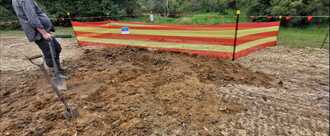
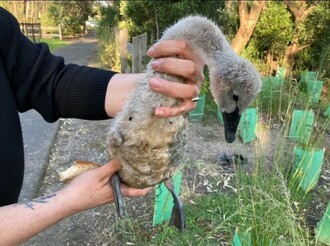
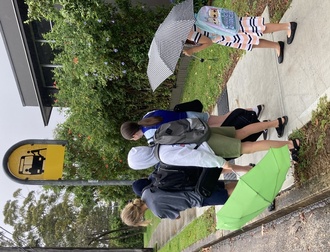
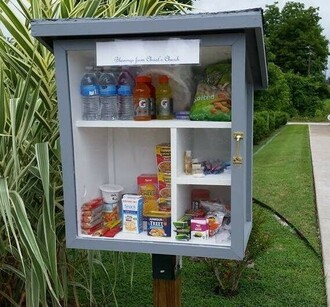

.png)

